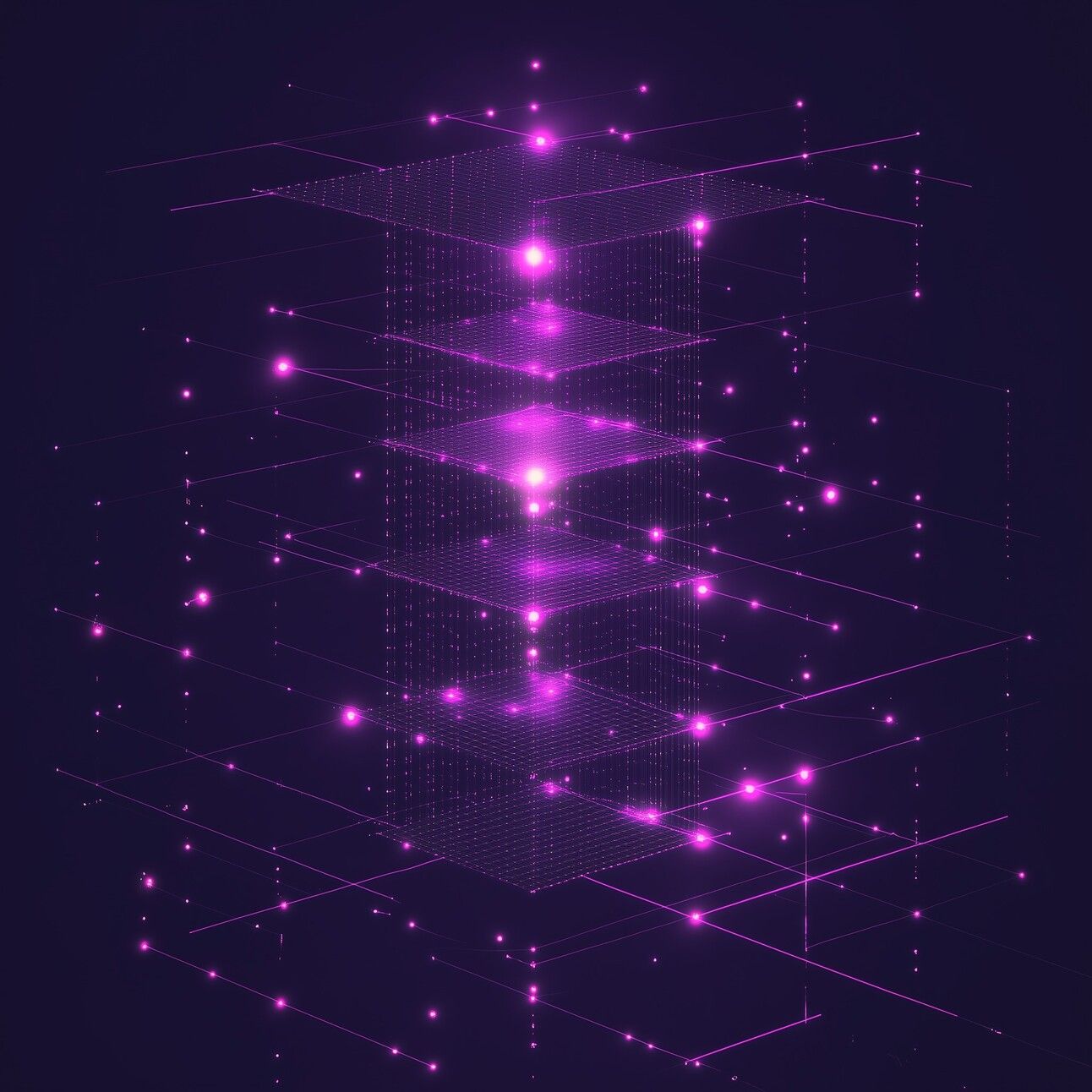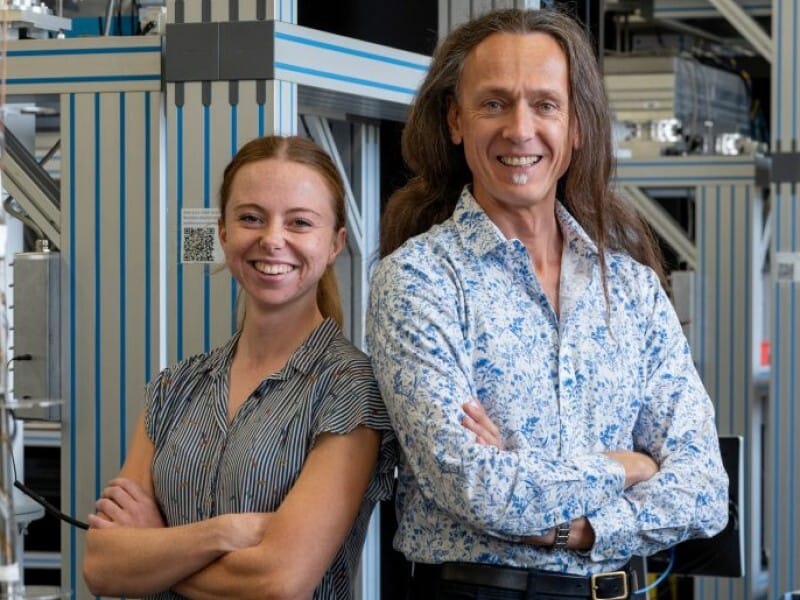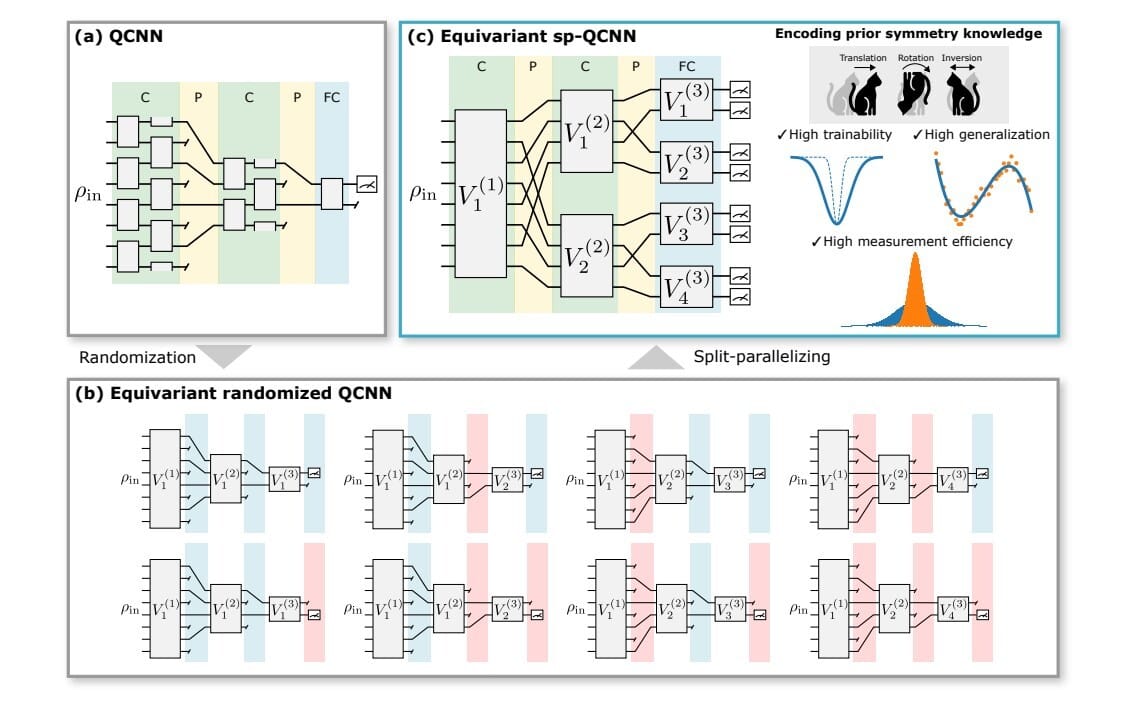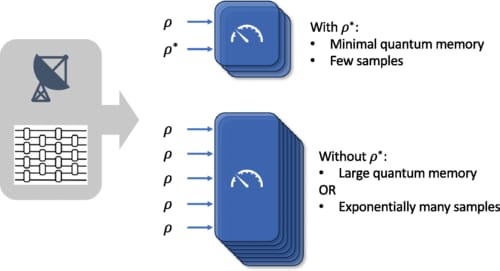- The Daily Qubit
- Posts
- The Daily Qubit
The Daily Qubit
First provable quantum entanglement between two phosphorus atoms in silicon, a resource-efficient QCNN, quantum memory with exponential advantages in learning tasks, and more.


Wednesday, October 2nd, 2024
Enjoy a nice cup of freshly brewed quantum news ☕️
Today’s issue includes:
Researchers demonstrated the first provable quantum entanglement between two phosphorus atoms in silicon.
A study introduces a resource-efficient equivariant quantum convolutional neural network (sp-QCNN) that leans on general symmetries to improve trainability, generalization, and measurement efficiency.
Quantum memory enhanced with access to conjugate quantum states provides exponential advantages in learning tasks such as shadow tomography.
Plus more insights into quantum phase transitions, a new photonic quantum architecture, Maxwell’s demon, and more .

QUICK BYTE: Researchers at the University of New South Wales (UNSW) have demonstrated the first provable quantum entanglement between two phosphorus atoms in silicon, highly relevant for scaling quantum computing using existing semiconductor technology.
DETAILS
The UNSW-led team successfully demonstrated quantum entanglement between two electrons on separate phosphorus atoms embedded in silicon. The entanglement was achieved with a high degree of confidence, overcoming challenges in getting phosphorus atoms to interact at such a small scale.
The phosphorus atoms were implanted into a silicon chip using ion implantation, positioning them around 20 nanometers apart. This technique aligns with existing semiconductor manufacturing methods, making future large-scale fabrication possible. The entanglement, which lasted around 200 microseconds, was confirmed using advanced measurement techniques in collaboration with Sandia National Laboratories.
This builds on earlier work from the same team and is distinct from other UNSW spinout efforts like silicon quantum computing and Diraq, which use different quantum information encoding techniques.
The project is publicly funded by the Australian Research Council and the United States Army Research Office, supporting open-access research and wide dissemination of findings. The demonstrated ability to achieve quantum entanglement in silicon could lead to more practical and scalable quantum computing solutions, with significant implications for the future of quantum technologies.
QUICK BYTE: A study from the Fujitsu Research Quantum Laboratory introduces a resource-efficient equivariant quantum convolutional neural network (sp-QCNN) that leans on general symmetries to improve trainability, generalization, and measurement efficiency for quantum machine learning on near-term quantum devices.
DETAILS
Researchers proposed a split-parallelizing equivariant quantum convolutional neural network (sp-QCNN) that uses symmetries beyond translational symmetry, achieving high trainability and generalization without suffering from barren plateaus, a common issue in variational quantum algorithms.
The sp-QCNN divides quantum circuits at pooling layers, preserving symmetry and enabling efficient parallelization. This method improves measurement efficiency, estimating expectation values and gradients by a factor proportional to the number of qubits, as demonstrated in noisy quantum data classification tasks.
By encoding general symmetries and reducing measurement requirements, the sp-QCNN advances the practical implementation of quantum machine learning on near-term devices, addressing a challenge in the scalability and performance of quantum neural networks.
This work lays a foundation for integrating symmetry and resource-efficient quantum architectures, contributing to the development of more practical quantum machine learning models that can be scaled using available quantum devices while maintaining high accuracy and trainability.
QUICK BYTE: Google Quantum AI demonstrated that quantum memory enhanced with access to conjugate quantum states provides exponential advantages in learning tasks such as shadow tomography, providing more efficient information extraction from quantum systems with minimal quantum memory.
DETAILS
The authors introduce a learning algorithm using minimal quantum memory, which uses the complex conjugate of a quantum state to achieve exponential advantages in learning displacement amplitudes, outperforming traditional methods requiring large quantum memory.
The study focuses on shadow tomography, a technique used to estimate properties of quantum states, and shows that access to the complex conjugate state allows for efficient entangled measurements, reducing the number of samples needed to learn key properties of a quantum state.
This work provides a practical pathway for quantum simulations and learning from quantum sensors using near-term quantum devices. It highlights the potential for minimal quantum memory to perform complex learning tasks with high accuracy, using logarithmically fewer samples compared to classical counterparts.
The techniques proposed have potential applications in quantum sensing and quantum simulations, particularly in scenarios where quantum states are obtained from nature or quantum sensors, and exponentially improve the efficiency of tasks like signal detection in noisy environments.
Writer RAG tool: build production-ready RAG apps in minutes
Writer RAG Tool: build production-ready RAG apps in minutes with simple API calls.
Knowledge Graph integration for intelligent data retrieval and AI-powered interactions.
Streamlined full-stack platform eliminates complex setups for scalable, accurate AI workflows.

XeedQ, a Leipzig-based quantum computing company, plans to establish Quantum Information Technology Centers in Telangana and Tamil Nadu, India, to broaden the accessibility of quantum computing and train students on real systems. XeedQ has secured a €30 million (approximately $33.1 million) deal with the German Aerospace Center to develop scalable quantum technology, with a goal of delivering a 32-qubit computer by 2026. The company’s XQ1 processors, which operate at room temperature, are already in use in major sectors, with future plans for processors of up to 256 qubits.
Physicists from the University of Bonn and RPTU Kaiserslautern-Landau discovered that as they reduced the spatial dimension of an optical quantum gas from 2D to 1D, it underwent a smooth, gradual transition rather than an abrupt condensation. By using a modified optical microcavity with laser-printed polymer nanostructures, the team was able to trap photons and study the thermal fluctuations that disrupt the order in 1D systems. This experiment offers new insights into quantum phase transitions, and the researchers plan to explore more complex photon confinement in future studies.
A study from Sorbonne Universite, Quandela, and others explores a new quantum photonic architecture that uses a technique called State Injection (SI) to improve the expressivity and control of photonic quantum circuits. This architecture is designed to outperform classical approaches in solving complex learning tasks and offers a potential quantum advantage over traditional linear optical circuits. The research emphasizes that SI enables a significant increase in circuit expressivity without requiring the complex adaptive methods seen in other quantum setups. Theoretical results on purity and distinguishability are presented, showing how the purity of quantum states evolves with SI, and the impact on computational tasks like probability estimation.
Researchers used reinforcement learning to optimize feedback control strategies in quantum systems, focusing on balancing cooling efficiency and measurement costs in qubit-based systems. The RL agent, acting like a “Maxwell’s demon,” discovered non-intuitive strategies such as using repeated weak measurements and qubit entanglement to enhance system stability and performance. This approach could advance quantum thermodynamics by improving quantum heat engines and reducing energy costs in quantum devices, although it requires significant computational resources and may face challenges in scaling to larger systems.
In a recent interview, Bert de Jong, Director of the Quantum Systems Accelerator (QSA), discussed the center’s work on advancing quantum computing technologies, focusing on trapped ions, neutral atoms, and superconducting qubits. The QSA uniquely co-designs quantum systems by developing better qubits, improving error-prone control mechanisms, and creating efficient algorithms. De Jong highlighted key advancements, such as the control of 250 neutral atoms for scientific simulations and Sandia's ion-based quantum computers, which are moving closer to solving complex problems in materials science, chemistry, and beyond. The center also collaborates with industry, promoting technology transfer and commercialization.

LISTEN
On the most recent episode of the Universal Quantum podcast - Quantum Frontier, explore quantum computing fundamentals, qubits, the Bloch Sphere, and quantum mechanics with relatable analogies.
ENJOY
A recent article from Forbes comments on AI's rapidly growing energy demands, set to double data center usage by 2030, with current infrastructure unprepared for this increase. Quantum computing offers a potential solution, with companies like IonQ developing quantum processors that are far more energy-efficient than traditional supercomputers. However, the article stresses that addressing AI's energy needs will require a broad approach, including modernizing the electric grid and integrating renewable energy sources alongside quantum computing advancements.
WATCH
Register HERE to watch a replay of the inauguration of the first European IBM Quantum Data Center.


abstract neural network because —art— 📸: Midjourney
How many qubits was today's newsletter? |






